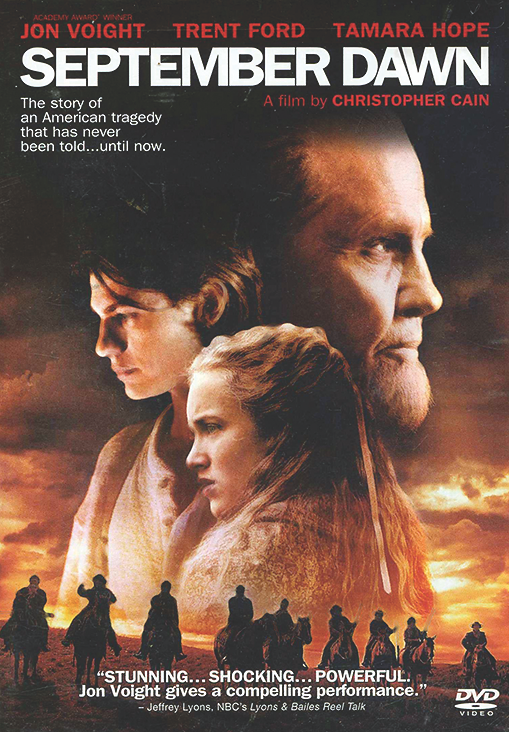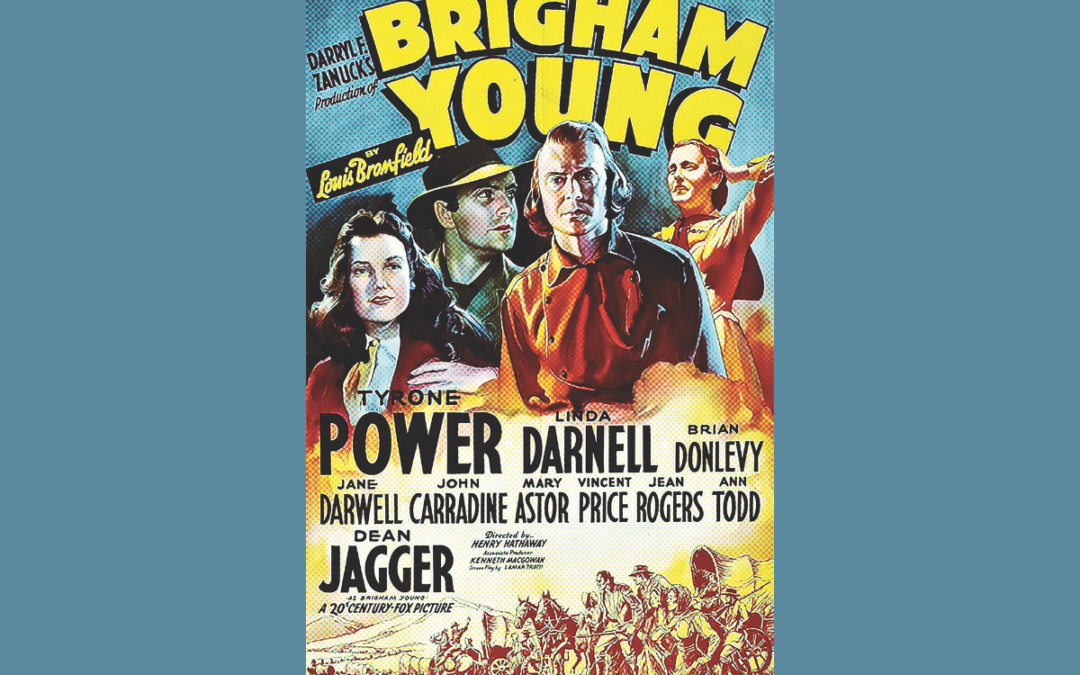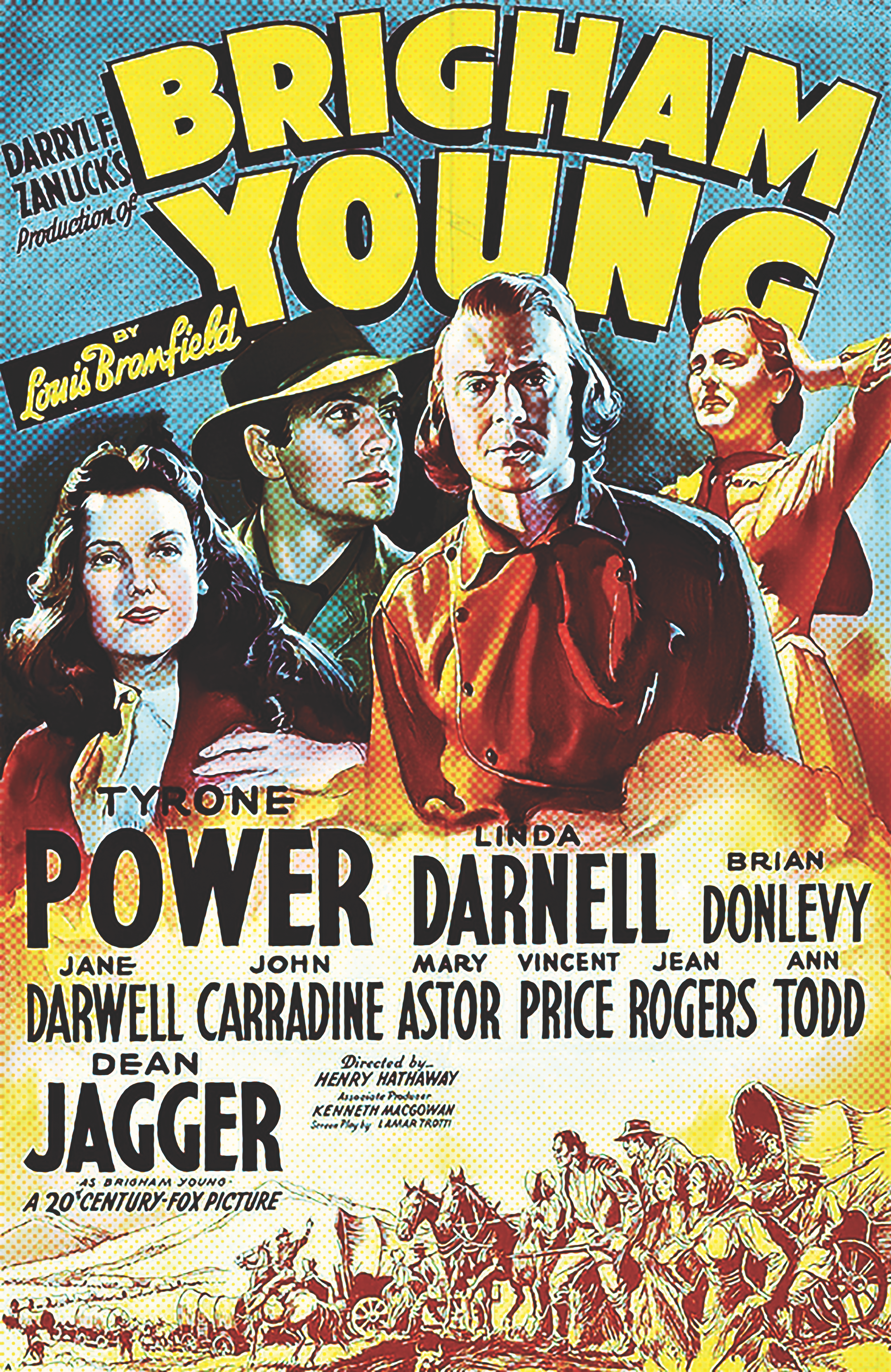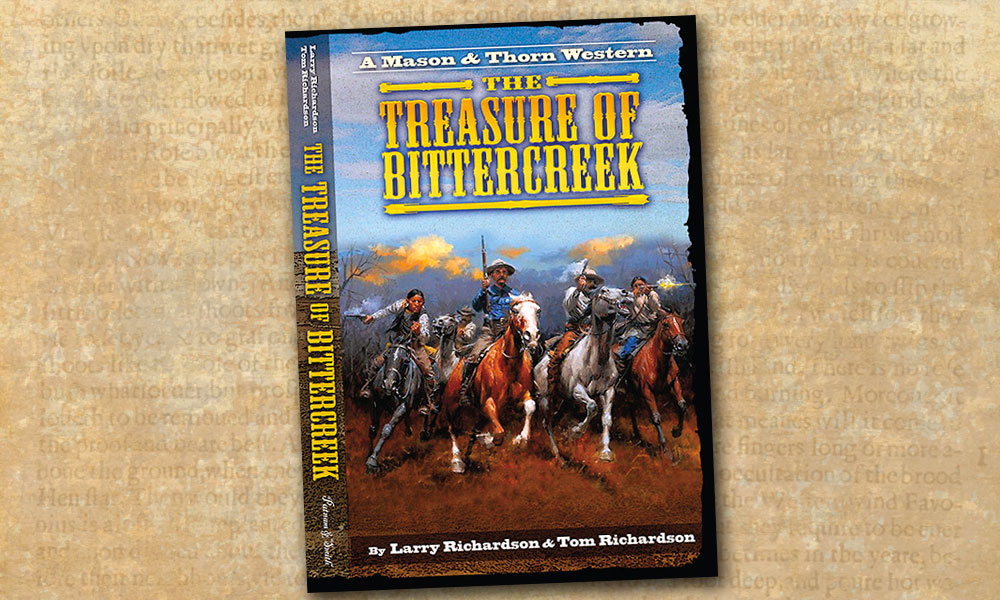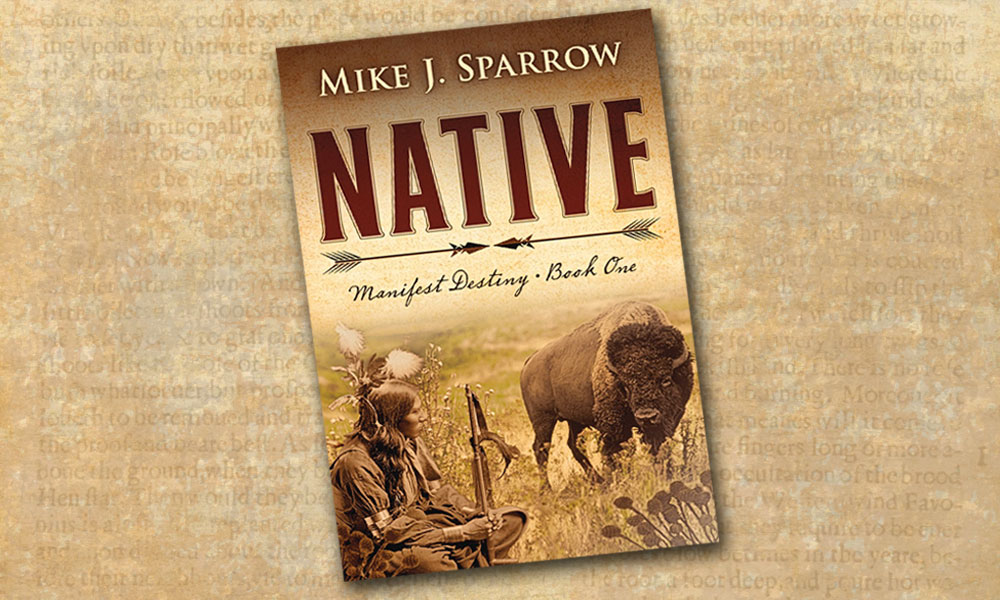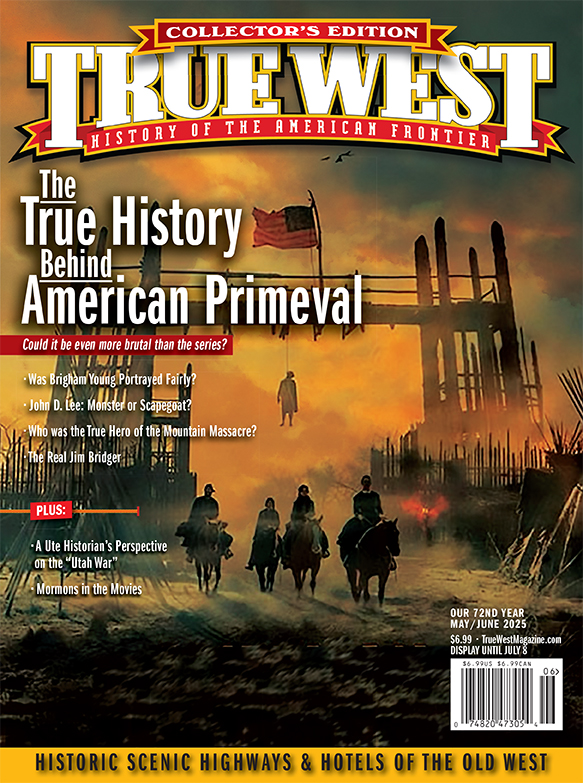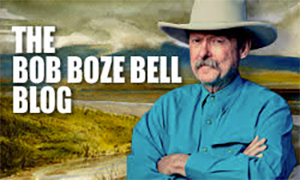From Mormonsploitation to edification,
Latter-Day Saints Cinema runs the gamut
The early screen portrayals of Mormonism were not flattering, especially in their focus on the perceived evils of polygamy. Mormon evangelists had made themselves so unpopular in Denmark that by 1911, they had a mini-industry of anti-Mormon films, with others made in France and England in addition to the United States. Similarly themed silent versions of Zane Grey’s Riders of the Purple Sage, and Sir Arthur Conan Doyle’s A Study in Scarlet were not likely to produce converts.
The first important film about Mormons, and Brigham Young in particular, was 20th Century Fox’s 1940 release, Brigham Young, which starred handsome Tyrone Power—not as Young, but as a sort of Mormon “everyman,” with Linda Darnell as a non-Mormon “everywoman.” Fox President Darryl F. Zanuck was one of the few non-Jewish studio heads, but he was very socially conscious. Concerned about the abuse of Jews in Germany, he wanted to present the story of the Mormons as a sort of parable to what Jews were going through. Delighted at the chance for a positive portrayal, Zanuck received the wholehearted assistance of the Mormon Church. Director Henry Hathaway was less enthusiastic: “The two dullest things in the whole world are a wagon train and religion. Now you take them and put them together.” But with a script by Fox’s top screenwriter, Lamar Trotti, and cinematography by three-time Oscar-winning black-and-white master Arthur Miller, Hathaway made a thrilling, timeless adventure. An important production, it was shot not only at Fox’s soundstages and their Malibu Ranch, but at Big Bear, Lone Pine and other California locations, plus Elko, Nevada, and Kanab, Utah.
The film begins with an unprovoked attack on a social gathering of Mormons, leaving Power’s and Darnell’s fathers among the dead. Soon after, Joseph Smith, founder of the LDS Church, is convicted of treason in a kangaroo court and lynched, but not before handing the religion’s reins to Brigham Young. When an attack on the Mormon city of Nauvoo is imminent, Young tells the populus to follow him, abandon the settlement in the dead of night, cross a frozen river, and head west to find somewhere they can live and be free, at length reaching Salt Lake.
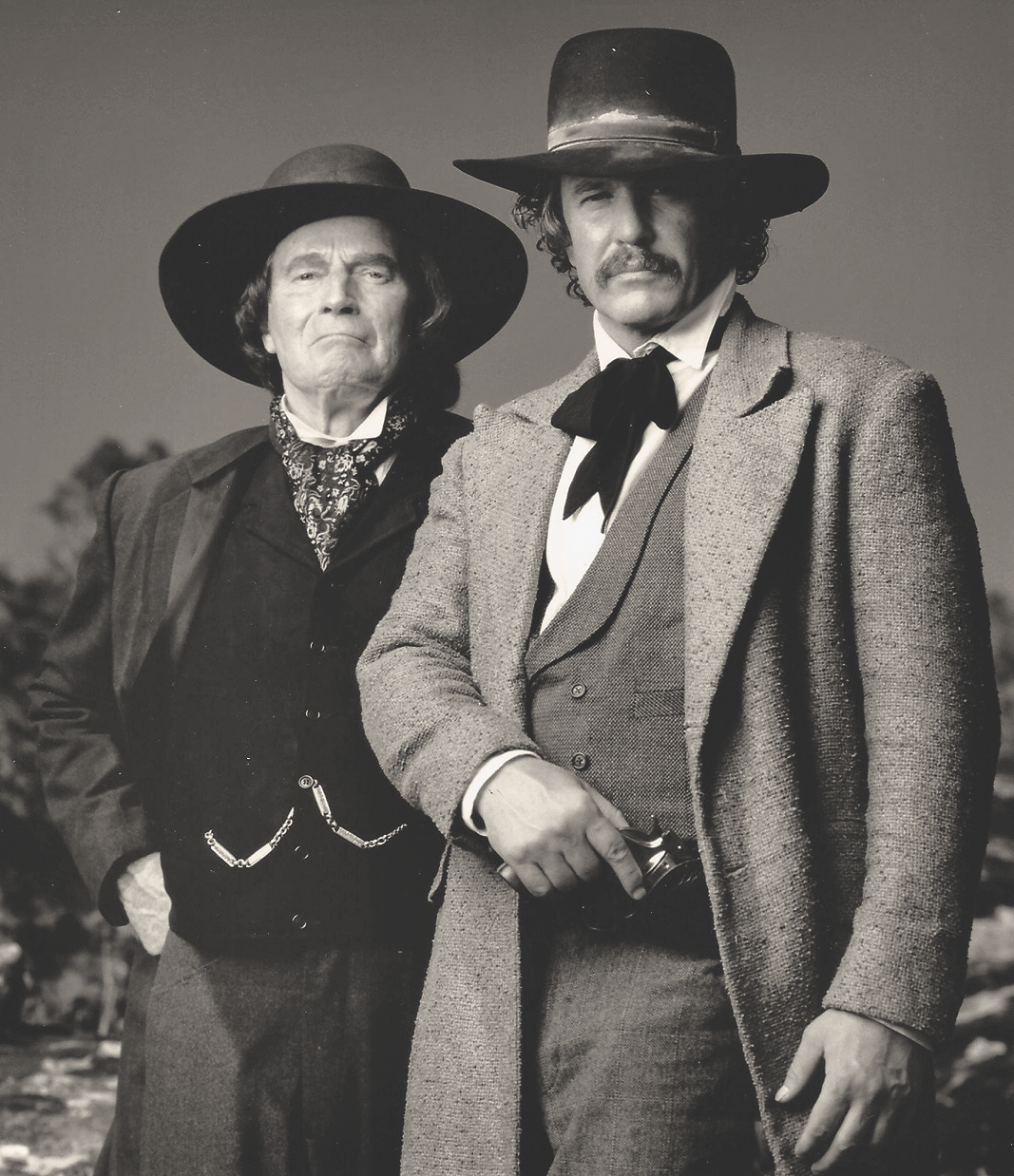
The cast was full of fine actors in uncharacteristic roles. Joseph Smith was a pre-horror Vincent Price. Dean Jagger, future Oscar-winner (for 12 O’clock High) and future Mormon convert, played Brigham Young, and his courtroom speech defending freedom of religion is magnificent. Although played somewhat humorously, John Carradine portrayed Porter Rockwell, a real lawman and bodyguard to Young, who had killed so many men in his work that he was nicknamed The Destroying Angel. Brian Donlevy played the fictional Angus Duncan, a Mormon villain who is willing to appease his enemies and sell out his brethren, if profitable.
Brigham Young didn’t avoid the question of polygamy entirely, but they soft-pedaled it. When Jim Bridger meets Young, he asks, “Say, how many—?” “Twelve,” Young replies before Bridger can finish the sentence: doubtless, many viewers never realized what the question was. In spite of that number, Mary Astor is the only wife he speaks to; Jean Rogers is billed as another wife, but that relationship is easy to miss, and the other 10 are never seen. And, for the record, the true number
of wives Young had in his life-
time was probably 56. When the unmarried Tyrone Power proposes to Linda Darnell, she’s angry at the idea that he might want other wives, despite his assuring her that if she accepts, he couldn’t possibly want any brides besides her.
One of the most startling inclusions is that when things are at their worst, with Mormons dying of hunger, Brigham Young wonders if he’s being punished for lying about God telling him to take charge in the first place! It is only after the “Miracle of the Seagulls,” when the birds unexpectedly appear and eat the locusts that are destroying the harvest, that Young is convinced that he has definitely received a sign from God.
Polygamy was even more controversial in the Old West than elsewhere, because in a region where there were so few women, the thought of a man taking more than one wife was infuriating. It was an issue dramatized in many Western TV episodes of the 1960s and ’70s, and a major subplot in the How the West Was Won series.
Hell on Wheels, the AMC series about the building of the Trans-continental Railroad, ran for
five seasons, from 2011 to 2016, and Anson Mount as Cullen Bohannon had numerous dealings with Mormon characters, from trying to put tracks through their land, to dealing with the decidedly villainous Brigham Young (Gregg Henry). There were also several episodes in which the psychotic killer known as The Swede (Christopher Heyerdahl) impersonates a Mormon bishop.
After Brigham Young, feature films about Mormons were pretty rare, none of note appearing until the 1976 Goldie Hawn, George Segal Western comedy, The Duchess and the Dirtwater Fox. Segal plays a swindler, and Hawn plays a prostitute impersonating a duchess, and trying to become the seventh wife of a wealthy Mormon, presuming she’d only have to “work” one day a week.
Beginning in 1980 with the short, Joseph Smith, The Man, director and cinematographer T.C. Christensen has demonstrated increasing skill and artistry making nearly 30 Mormon faith-based historical films, including 17 Miracles, Ephraim’s Rescue and last year’s Escape from Germany, many of which are Westerns, at least by setting.
In 1995, Ted Turner produced the Western thriller TV movie The Avenging Angel, with Charlton Heston as Brigham Young, and James Coburn as Porter Rockwell. Tom Berenger stars as a bodyguard for Young, who foils an assassination attempt, inadvertently exposing a conspiracy to take over the church. Young is shown in a largely positive light here, but it’s also clear that Berenger’s duties to him include being an on-call assassin.
Hardly noticed when it was released, Young Guns director Christopher Cain made September Dawn in 2006. With British Oscar-nominee Terrence Stamp as Brigham Young, and Coming Home Oscar-winner Jon Voight as Jacob Samuelson, Young’s fictional right-hand man, this is probably the first movie-telling of the Mormon Meadows Massacre. It’s mostly seen from the points of view of star-crossed lovers, Samuelson’s son (Trent Ford), who is having a crisis of faith, and a young girl on the wagon train (Tamara Hope). Unlike American Primeval, the massacre is the core of this story, and shown more accurately here as taking place over several days. While not as bloody as American Primeval, it is jarringly brutal, and both films place the blame for the slaughter on Brigham Young’s shoulders.
